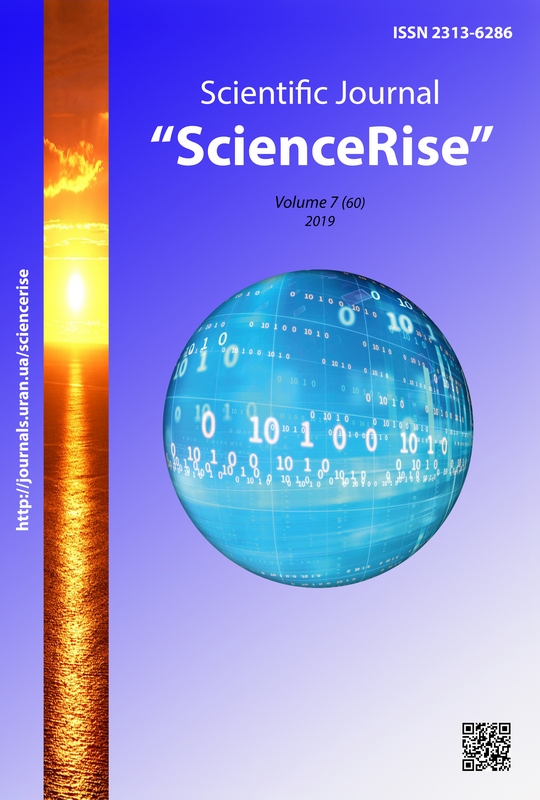Technique of development of information and technical method of optimization of carrying out of emergency and rescue works related to emergency situations in the zone of urban infrastructure
DOI:
https://doi.org/10.15587/2313-8416.2019.174447Keywords:
emergency, QR-coding, management, rescue units, optimization, information technology methodAbstract
The paper analyzes the current state of technogenic and natural security in cities and urban-type settlements in Ukraine, identifies the main contradictions in the organization of actions of emergency and rescue units. The assumption about the possibility of influencing the effectiveness of the actions of rescue units of modern information and communication technologies, namely, QR-coding technology, is substantiated. A scheme for organizing informational QR-support in the zone of possible emergency is proposed. On the basis of the latter, the ways of implementation and the structure of an information technology method for optimizing rescue operations in the area of urban infrastructure are determined
References
Analitychnyi ohliad stanu tekhnohennoi ta pryrodnoi bezpeky v Ukraini za 2017 rik (2018). Kyiv. Available at: https://www.dsns.gov.ua/files/prognoz/report/2017/%D0%90%D0%9E_2017.pdf
Analitychnyi ohliad stanu tekhnohennoi ta pryrodnoi bezpeky v Ukraini za 2018 rik (2019). Kyiv. Available at: https://www.dsns.gov.ua/ua/Analitichniy-oglyad-stanu-tehnogennoyi-ta-prirodnoyi-bezpeki-v--Ukrayini-za-2015-rik.html
Shevchenko, R. I. (2016). Vyznachennia teoretychnykh osnov informatsiino-komunikatyvnoho pidkhodu do formuvannia ta analizu system monitorynhu nadzvychainykh sytuatsii. Systemy obrobky informatsii, 5 (142), 202–206.
Chang, J. H. (2014). An introduction to using QR codes in scholarly journals. Science Editing, 1 (2), 113–117. doi: http://doi.org/10.6087/kcse.2014.1.113
Chatterjee, S. K., Saha, S., Khalid, Z., Saha, H. N., Paul, P., Karlose, R. (2018). Space effective and encrypted QR code with sender authorized security levels. 2018 IEEE 8th Annual Computing and Communication Workshop and Conference (CCWC). Las Vegas, 439–443. doi: http://doi.org/10.1109/ccwc.2018.8301640
Cata, T., Patel, P. S., Sakaguchi, T. (2013). QR Code: A New Opportunity for Effective Mobile Marketing. Journal of Mobile Technologies, Knowledge and Society, 2013. Available at: https://ibimapublishing.com/articles/JMTKS/2013/748267/748267.pdf
Scho take QR-kod I yak nim koristuvatis. 2019. Available at: https://help.mob.org.ua/post/725/
Scho take QR-kod I yak nim koristuvatis. 2019
Zasadna, Kh. O. (2014). QR-koduvannia ta alternatyvni tekhnolohii. Finansovyi prostir, 3 (15), 103–108.
Butyrska, I. V., Manhul, A. V. (2015). Tekhnolohiia QR-kodu yak instrument pidvyshchennia efektyvnosti funktsionuvannia servisnykh system. Visnyk Chernivetskoho torhovelno-ekonomichnoho instytutu. Ekonomichni nauky, 1 (57), 165–171.
QR-kodyi: v Ukraine i v mire. Available at: https://www.imena.ua/blog/qr-%D0%BA%D0%BE%D0%B4%D1%8B-%D0%B2-%D1%83%D0%BA%D1%80%D0%B0%D0%B8%D0%BD%D0%B5-%D0%B8-%D0%B2-%D0%BC%D0%B8%D1%80%D0%B5/
Davis, K. (2012). Emergency Workers Scan QR Codes to Quickly Access Health Information. Available at: https://www.pcworld.com/article/256550/emergency_workers_scan_qr_codes_to_quickly_access_health_information.html
SOS QR. Available at: https://www.nhs.uk/apps-library/sos-qr/
Mercedes-Benz Rescue Assist. Available at: https://www.mercedesbenzcary.com/rescue-assist-video.html
Uzun, V., Bilgin, S. (2016). Evaluation and implementation of QR Code Identity Tag system for Healthcare in Turkey. SpringerPlus, 5 (1). doi: http://doi.org/10.1186/s40064-016-3020-9
Pro zatverdzhennia Zahalnykh vymoh shchodo provedennia medychnoho sortuvannia postrazhdalykh i khvorykh ta form medychnoi dokumentatsii (2012). Nakaz MOZ Ukrainy No 366. 18.05.2012. Available at: https://zakon.rada.gov.ua/laws/show/z0884-12
Downloads
Published
Issue
Section
License
Copyright (c) 2019 Victor Strelets, Olga Shevchenko, Roman Shevchenko

This work is licensed under a Creative Commons Attribution 4.0 International License.
Our journal abides by the Creative Commons CC BY copyright rights and permissions for open access journals.
Authors, who are published in this journal, agree to the following conditions:
1. The authors reserve the right to authorship of the work and pass the first publication right of this work to the journal under the terms of a Creative Commons CC BY, which allows others to freely distribute the published research with the obligatory reference to the authors of the original work and the first publication of the work in this journal.
2. The authors have the right to conclude separate supplement agreements that relate to non-exclusive work distribution in the form in which it has been published by the journal (for example, to upload the work to the online storage of the journal or publish it as part of a monograph), provided that the reference to the first publication of the work in this journal is included.

